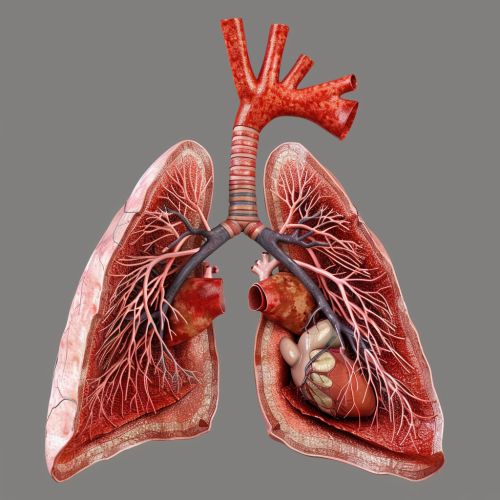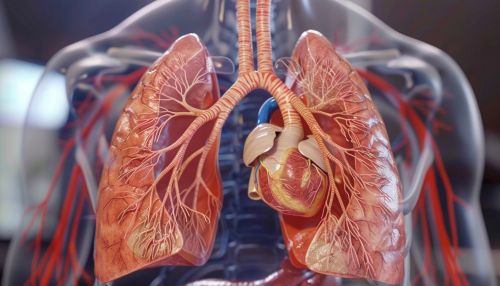Pulmonary Artery
Anatomy
The pulmonary artery is one of the major vessels in the circulatory system of the body. It carries deoxygenated blood from the right ventricle of the heart to the lungs for oxygenation.


The pulmonary artery begins at the base of the heart's right ventricle. It is a short and wide artery, approximately 5 cm in length and 3 cm in diameter in adults. It is divided into two main branches, the left and right pulmonary arteries. These branches further subdivide into smaller arteries and arterioles, eventually forming a network of capillaries within the lung tissue.
Physiology
The primary function of the pulmonary artery is to transport deoxygenated blood from the heart to the lungs. This process is a crucial part of the respiratory system and the circulatory system. The blood in the pulmonary artery is low in oxygen and high in carbon dioxide, a waste product of cellular metabolism.
In the lungs, the blood releases carbon dioxide and picks up oxygen during the process of respiration. The oxygenated blood then returns to the heart through the pulmonary veins, ready to be pumped to the rest of the body.
Clinical Significance
The pulmonary artery is a critical component of the body's circulatory system, and its health and function can significantly impact an individual's overall health. Conditions that affect the pulmonary artery, such as pulmonary hypertension, can lead to serious health complications.
Pulmonary hypertension is a condition characterized by high blood pressure in the arteries of the lungs. It can be caused by various conditions, including heart disease, lung disease, and blood clots in the pulmonary artery, known as pulmonary embolism.
